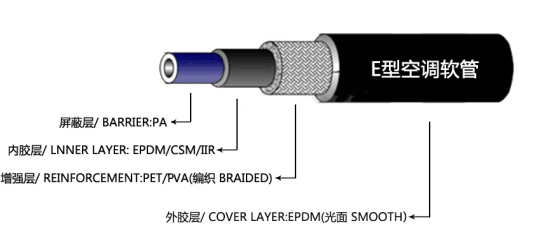corrugated pipe coupling
Understanding Corrugated Pipe Coupling A Comprehensive Guide
Corrugated pipe coupling is an essential component in various applications, ranging from civil engineering to landscaping. This versatile fitting serves as a connection point between lengths of corrugated piping, ensuring a secure and efficient flow of fluids while providing the necessary structural integrity. In this article, we will delve into the significance, types, installation methods, and applications of corrugated pipe coupling, shedding light on why it is a pivotal element in modern infrastructure.
What is Corrugated Pipe Coupling?
Corrugated pipes are characterized by their wavy surface, which not only enhances flexibility but also increases their strength and durability. These pipes are predominantly used for drainage, stormwater management, and electrical conduit applications. Corrugated pipe couplings are specially designed fittings that join two sections of these pipes, enabling seamless transitions and maintaining the pipe's inherent properties.
Types of Corrugated Pipe Couplings
There are several types of couplings used with corrugated pipes, each designed for specific applications and materials
1. Mechanical Couplings These are typically made of metal or robust plastic materials and use bolts or clamps to secure the connection. They are favored for their strength and reliability, making them ideal for high-pressure situations.
2. Snap-On Couplings These couplings feature a design that allows them to be easily snapped onto the ends of corrugated pipes. They are often used in applications where quick assembly is required, such as temporary setups or repairs.
3. Flexible Couplings Made from rubber or elastomeric materials, these couplings absorb vibrations and accommodate slight misalignments between pipe sections. They're particularly useful in situations where movement or ground shifting might occur.
4. Transition Couplings These couplings are designed to connect corrugated pipes with other types of pipes, such as PVC or concrete. They often come with specialized adapters to ensure a leak-proof seal.
Installation Methods
Installing a corrugated pipe coupling, while generally straightforward, requires attention to detail to ensure a secure fit
. Here’s a typical installation processcorrugated pipe coupling

1. Preparation First, ensure that the ends of the pipes to be connected are clean and free from debris. This prevents contamination and ensures a tight seal.
2. Selecting the Right Coupling Choose a coupling that matches the pipe diameter and material for compatibility.
3. Aligning the Pipes Align the two sections of the corrugated pipe in a straight line to facilitate a smooth connection.
4. Attaching the Coupling Depending on the type of coupling, either snap it onto the pipe or secure it using bolts. If using a mechanical coupling, tighten the bolts evenly to avoid stressing one side of the pipe more than the other.
5. Testing the Connection Once installed, it's essential to test the connection for leaks, especially in applications dealing with liquids. This can be done by running water through the pipes and observing for any signs of leakage around the coupling.
Applications of Corrugated Pipe Coupling
Corrugated pipe couplings are widely used across various sectors
- Drainage Systems In urban planning, they are crucial in maintaining efficient drainage systems, preventing waterlogging and flooding. - Stormwater Management They facilitate the controlled movement of stormwater, significantly mitigating erosion and runoff issues.
- Electrical Installations In the electrical industry, corrugated pipe couplings protect wiring and ensure safety while allowing for flexibility in installations.
- Agricultural Applications Farmers often use these couplings in irrigation systems to efficiently manage water flow in fields.
In conclusion, corrugated pipe couplings are vital components in maintaining the integrity and functionality of various piping systems. Their ability to securely connect different pipe sections while accommodating movement makes them indispensable in many applications. Understanding the types and installation methods of these couplings is essential for professionals working in related fields to ensure optimal performance and reliability of infrastructure projects.
-
Ultimate Spiral Protection for Hoses & CablesNewsJun.26,2025
-
The Ultimate Quick-Connect Solutions for Every NeedNewsJun.26,2025
-
SAE J1401 Brake Hose: Reliable Choice for Safe BrakingNewsJun.26,2025
-
Reliable J2064 A/C Hoses for Real-World Cooling NeedsNewsJun.26,2025
-
Heavy-Duty Sewer Jetting Hoses Built to LastNewsJun.26,2025
-
Fix Power Steering Tube Leaks Fast – Durable & Affordable SolutionNewsJun.26,2025

